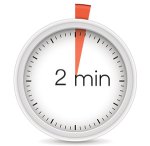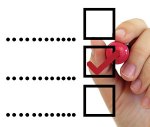Too Much to Do? Here Are 4 Steps For Getting Things Done

Scouting, school, sports, hobbies, friends … What’s a person to do?
Do it all!
How do you keep track of all the things you need to do and want to deal with? Is there some simple, magic formula for handling it all?
There is. Well, it’s not exactly magic, but it is simple. There are four steps:
- Capture what you need to keep track of. Write it down, or put it somewhere besides in your head. If a teacher gives an assignment, you think of something you want to look up online or your mom says, “Will you please remember to talk to Mr. Johnson about this?”, put a note about that in a place you’ll see again when you need to.
- Decide what you need to do next about it. When you get some homework or you realize that you want to look into a new bike, decide the very next action that you need to take. Is it to do some research? Talk to your dad? Write an outline of ideas? Buy nails at the hardware store?
- Organize a reminder in a trusted place. If you can’t take an action at this very moment, you need to create a reminder about it that you can see at the appropriate time.
- Regularly review everything that’s unfinished.
Here’s how to make these steps work for you. Proceed to step 1 >> >> >>

1. CAPTURE: Out of Your Head (And Into Action)
 Get something you can carry with you at all times to jot a note on. An index card or a pocket notepad would work great. Use it to write down assignments, things to do, things to deal with later, etc. Or, of course, you can use your smartphone or digital tablet to keep track of everything.
Get something you can carry with you at all times to jot a note on. An index card or a pocket notepad would work great. Use it to write down assignments, things to do, things to deal with later, etc. Or, of course, you can use your smartphone or digital tablet to keep track of everything.
Have an inbox or tray at home. You need a place to throw your inputs — all the stuff you collect during the day that might require action. In there, put all the notes you took, dead batteries, mail, receipts, etc. Have a specific area in your book bag, backpack or satchel for collecting your inputs. This is critical as you go from class to class and back and forth from school, home and other activities. You might get some information at your Scout meeting, a practice schedule from your band and just a note from your friend — all of which you need to look at later and maybe do something about.

2. DECIDE: Sort and Think (What’s Next?)
 Every day, go through the things you have collected and ask, “What’s my next action?” Is this something to, say, talk to your sister about, ask your teacher about, look up in the dictionary — or what, exactly? Any action that takes less than two minutes, do immediately. It will take you longer to organize and remind yourself later than to finish it in the moment.
Every day, go through the things you have collected and ask, “What’s my next action?” Is this something to, say, talk to your sister about, ask your teacher about, look up in the dictionary — or what, exactly? Any action that takes less than two minutes, do immediately. It will take you longer to organize and remind yourself later than to finish it in the moment.
For actions that will take longer than two minutes, or that you can’t do right now for some reason, put a reminder on a list.

3. ORGANIZE: Make a List (Get It All Together)
 Set up a good list-keeping tool — one that’s easy and fun to use. Get used to keeping several lists of reminders of things to do.
Set up a good list-keeping tool — one that’s easy and fun to use. Get used to keeping several lists of reminders of things to do.
Get a good calendar, too — one with room for all your appointments, scheduled events and reminders for specific days. This can be in a paper planner, notebook or some computer-based tool. Just be sure it is something you have with you and can use easily.
There might be things you need to keep track of that don’t go on your calendar — you just need to do them when you can. Homework, things to buy, things to talk to your parents or teachers or coaches about, etc. These need to go on lists that you can look at when you need to. If there is a date it has to be done by, note that. Divide the actions you really need to do as soon as you can into categories like Computer, Home, School, Errands and Talk To (a list for each person you deal with regularly), and create a “Someday/ Maybe” list of all the things you might want to do if you have the time and money.
Set up a filing system for reference material. It can be paper file folders kept in a cabinet or box, or it can be virtual file folders on your computer — whatever works best for you. You’ll need a system to hold stuff that you need to hang onto and potentially refer to later: instruction manuals, recipes, Scouting information, brochures, etc.

4. REVIEW: Stuff You Have To Do (And Stuff You Can Do)
 Get in the habit of starting every day with a look at your calendar — what do I have to do today and when? Second, review all your other lists of things that you might need or want to do if you have time.
Get in the habit of starting every day with a look at your calendar — what do I have to do today and when? Second, review all your other lists of things that you might need or want to do if you have time.
Once a week, do a review. This is your chance to catch up, look back on the week you just finished and capture any “Oh, yeah; I need to …” stuff, and look ahead at the coming week(s) to get a sense of the events that are coming up, any deadlines you need to keep track of, etc.
If you want to just zone out and have a great evening online with your friends, that’s cool. As long as you know what you’re not doing, and you (and the powers that be who are around you) are also cool with that.
EASY? NO. WORTH IT? DEFINITELY.
Keeping track of everything that you have to do, want to do, ought to do and might like to do can seem like a challenging task. It is. But the reward is feeling as if you’re in control of your game and in the driver’s seat, instead of just reacting later on when something blows up and you have to deal with it then.
It’s not quite magic, but once you start to get everything done, others will wonder what your secret is!
Editor’s Note: David Allen has written numerous books, including the international best-seller Getting Things Done: The Art of Stress-Free Productivity
Leave a Comment